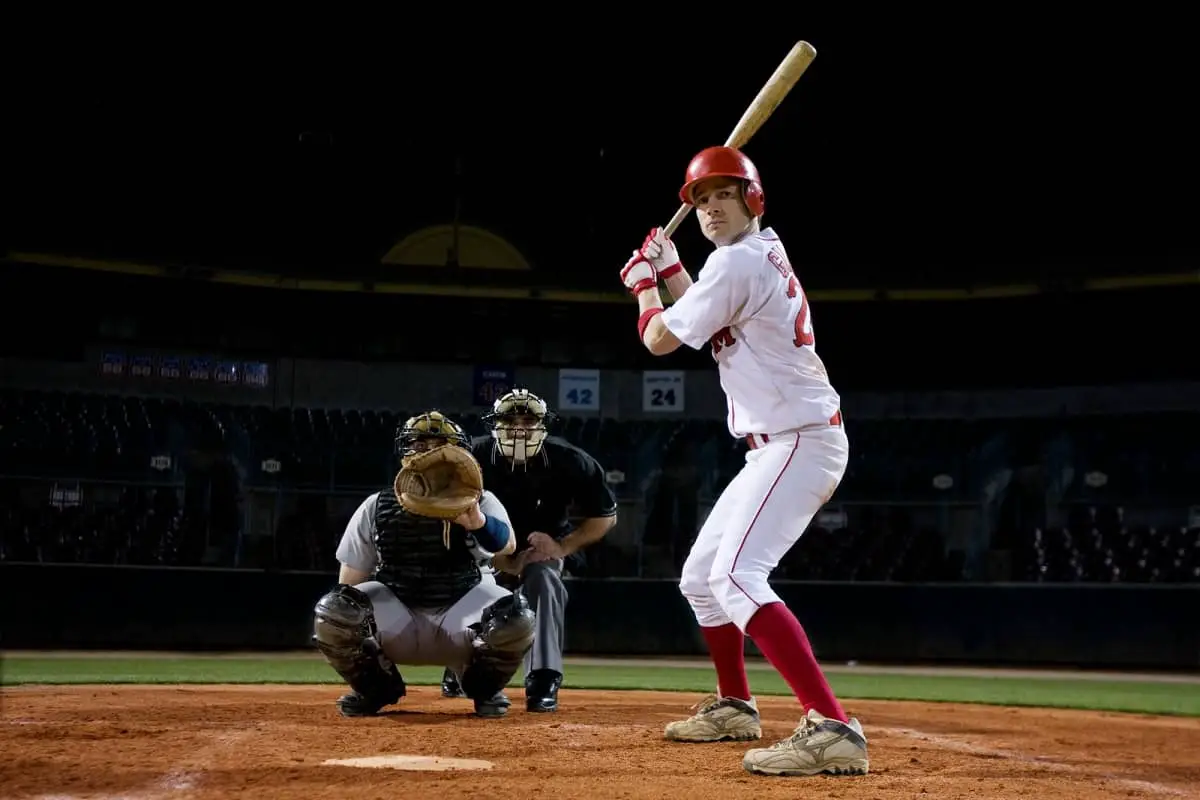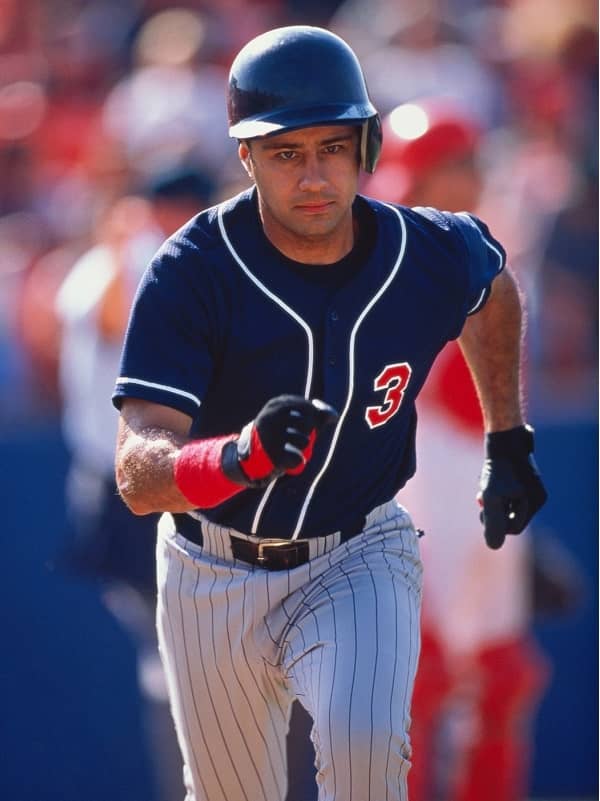Why Do Baseball Helmets Cover One Ear?
Baseball has traditionally been a safer sport than other games like football and hockey, though players have sometimes been seriously injured by a thrown ball.
This was particularly true of those at-bats who typically face some wild, fast pitches.
And, keeping in mind that it wasn’t that long ago when players only wore baseball caps, one could be forgiven for asking ‘why do baseball helmets cover one ear’? It’s a bit like just wearing half a helmet.
Some explanation is needed here.
The reason baseball helmets have one ear flap is simply to protect that ear from oncoming fastballs while the less vulnerable exposed ear can hear coaches shouting instructions.
Page Content

Disclosure: As an Avantlink and Amazon Associate, we earn from qualifying purchases. Disclosure Statement.
Why Do Baseball Helmets Cover One Ear?
Baseball helmets, also called batting helmets, with one ear flap have made appearances throughout the history of baseball but players were reluctant to wear them. Professional players said they could see the flap in their peripheral vision and it was distracting.
The reason baseball helmets have one ear flap is simply to protect that ear from oncoming fastballs while the less vulnerable exposed ear can hear coaches shouting instructions.
Major League Baseball (MLB) sets the standard for what all baseball teams wear, so mandates required by the MLB are passed down to lower-level teams and leagues.
MLB created a rule in 1983 that new players must wear a helmet with at least one ear flap. The NCAA (National Collegiate Athletic Association) and the NFHS (National Federation of State High School Association) required certified batting helmets beginning in 1985.
They were joined by all major youth team organizations including USA Baseball, ASA, Little League, and softball leagues.
Veteran players could still wear a helmet without earflaps, and any player in MLB could choose to wear one with double ear flaps, but that was voluntary.
NOCSAE Standards Baseball Helmets
NOCSAE (National Operating Committee on Standards for Athletic Equipment) is the agency that sets the testing and performance standards required by manufacturers of baseball helmets.
The certification of baseball helmets to NOCSAE standards is managed by the Safety Equipment Institute (SEI). This third-party certification began in 2018 to improve the integrity of implementing NOCSAE standards.
Baseball Helmet Evolution
Batting helmets have been around since 1905 but have faced some opposition from players because they were cumbersome and not very comfortable.
The first crude attempts were synonymous with putting a boxing glove around the head. Some players, like Roger Bresnahan, created their own after being injured. Bresnahan came out with his personal batting helmet in 1908.
Willie Wells, who played in the black baseball league in 1936, started wearing a construction hard hat he adapted for the game after being knocked unconscious by a ball to the head.
This content was originally published on headsdontbounce.com. If it appears on another website, it is a violation of the copyright owned by headsdontbounce.com.
Mickey Cochrane became a helmet advocate after he nearly died by a pitch in 1937. The injury ended his career. Philadelphia Athletics and the Cleveland Indians started using helmets a week after Cochrane was injured, becoming the first MLB teams to test the idea.
Helmets with two ear flaps, created by the Little League, made it to MLB when player Jim Lemon wore one in 1960. While these were used a lot in lower-level baseball, they weren’t often seen among professional players.
Baseball helmets finally became mandatory in MLB in 1971.
Helmet Use Grows

New helmet models came out in 2005 in an attempt to mix safety with comfort. These helmets had vents on the back and sides and larger ear-holes than previous models. Most newer players wore these.
The mandated use of helmets spread to others on the field. MLB required bat boys and girls and ball boys and girls to wear a helmet while on the field performing their duties. They could wear a no-flap style if they preferred.
MLB started requiring coaches to wear helmets in 2008, even though some coaches opposed the new rule. The new mandate was prompted by the 2007 death of Mike Coolbaugh, a first-base coach for the Tulsa Drillers who died after being hit by a ball.
How to Pick a Batting Helmet
There are several things to look for when picking a batting helmet, including:
- The helmet must have SEI/NOCSAE Certification.
- It must fit your head properly and not wobble around.
- The helmet must have adequate ventilation.
- It should have a sweat-wicking liner.
Make sure the flap covers the correct ear for your use. Right-handed batters need the flap on the left ear while left-handed batters need the flap on the right ear. Switch hitters should have both ears covered.
Helmets need to fit comfortably and remain snug. Don’t be influenced by cheap prices, always buy the best quality helmet that is within your budget.
Remember, a batting helmet is the most important piece of safety equipment you can invest in. It isn’t something you want to skimp on.
Conclusion
The batting helmet debate has been around almost as long as the game of baseball itself, but the foundation of the discussion is player safety. Players want comfort as well as safety and some find the one-flap style provides more comfort while still protecting the most vulnerable parts of the head when at the batter’s box.
If you liked this post, why not share it with your friends.


